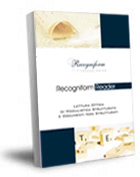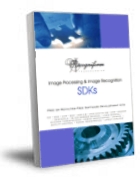Many years ago, with the introduction of scanners, webcams, digital cameras and other imaging devices, including software producer have resulted in a need for consistency and simplification so that we can interface to these devices without having to continually study the specific hardware and interface it directly to own applications.
To meet this need, back in 1991, some producers of hardware and software have been brought together in a working group and have created a standard protocol and an API (Application Programming Interface) to allow the communication between software applications and hardware devices to acquisition images.
This standard has taken the name of the TWAIN, an acronym for Toolkit Without An Intersting Name (equipment without an interesting name).
A scanner equipped whit TWAIN driver is compatible with this standard and with all software application that support.
Similarly, an application that supports the TWAIN standard can interface with all devices that have a compatible driver.
A feature of the TWAIN driver is also that provide a graphical user interface through which the user can change the capture settings, such as resolution, size, mode, brightness, contrast and other specific parameters supported.
Over time, the evolution of hardware and the advent of compression cards through which drive the production scanners,
the TWAIN standard has started to show signs of inadequacy, resulting in not enough updated to take advantage of some new features made available by the document scanners,
just like the on-board compression, reading of patch-code, the endorser management, etc ...
Is been introduced a new standard, called ISIS that, contrary to what TWAIN was drawn by a single private company, the Pixel Translations,
which simultaneously placed on the market a series of specific drivers for the majority of the scanner on the market and a toolkit for software developers.
This standard initially took the foot quickly because actually it was more powerful and more flexible than the other.
However with the passage of time, with the review and the introduction of new versions of the TWAIN standard, the gap in performance and flexibility is completely gone, making it completely equivalent and interchangeable the two technologies.
Another important thing is that the use of the standard ISIS is subject to the payment of royalties by both software producers by hardware manufacturers, contrary to the TWAIN standard instead the use of which is free.
Our products that implement the TWAIN and ISIS Scanning technology
For more information on the TWAIN and ISIS Scanning technology, it is worthwhile to know how and know our solutions that implement it, you can send us an e-mail to
informazioni@recogniform.it or fill in the form below.


